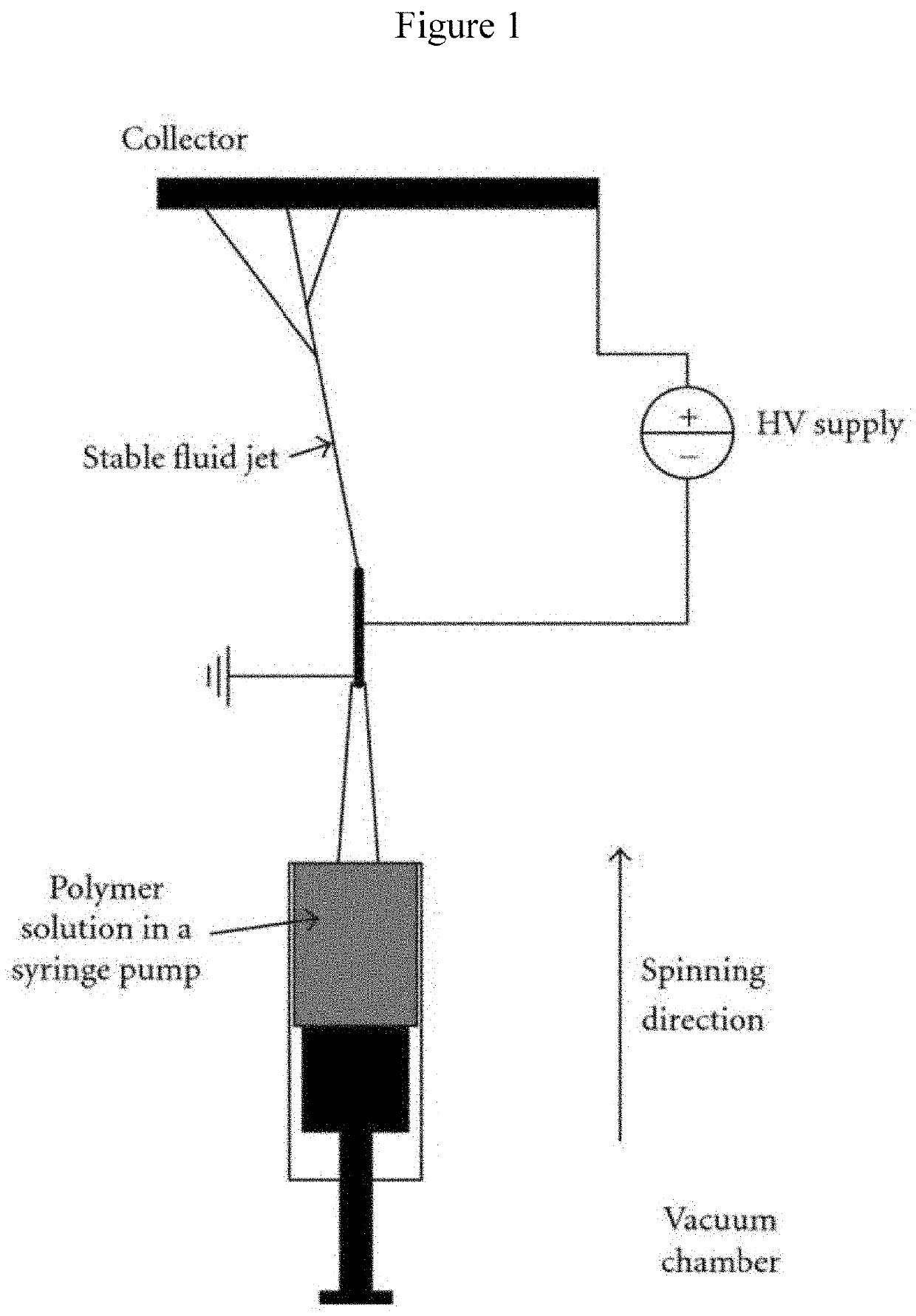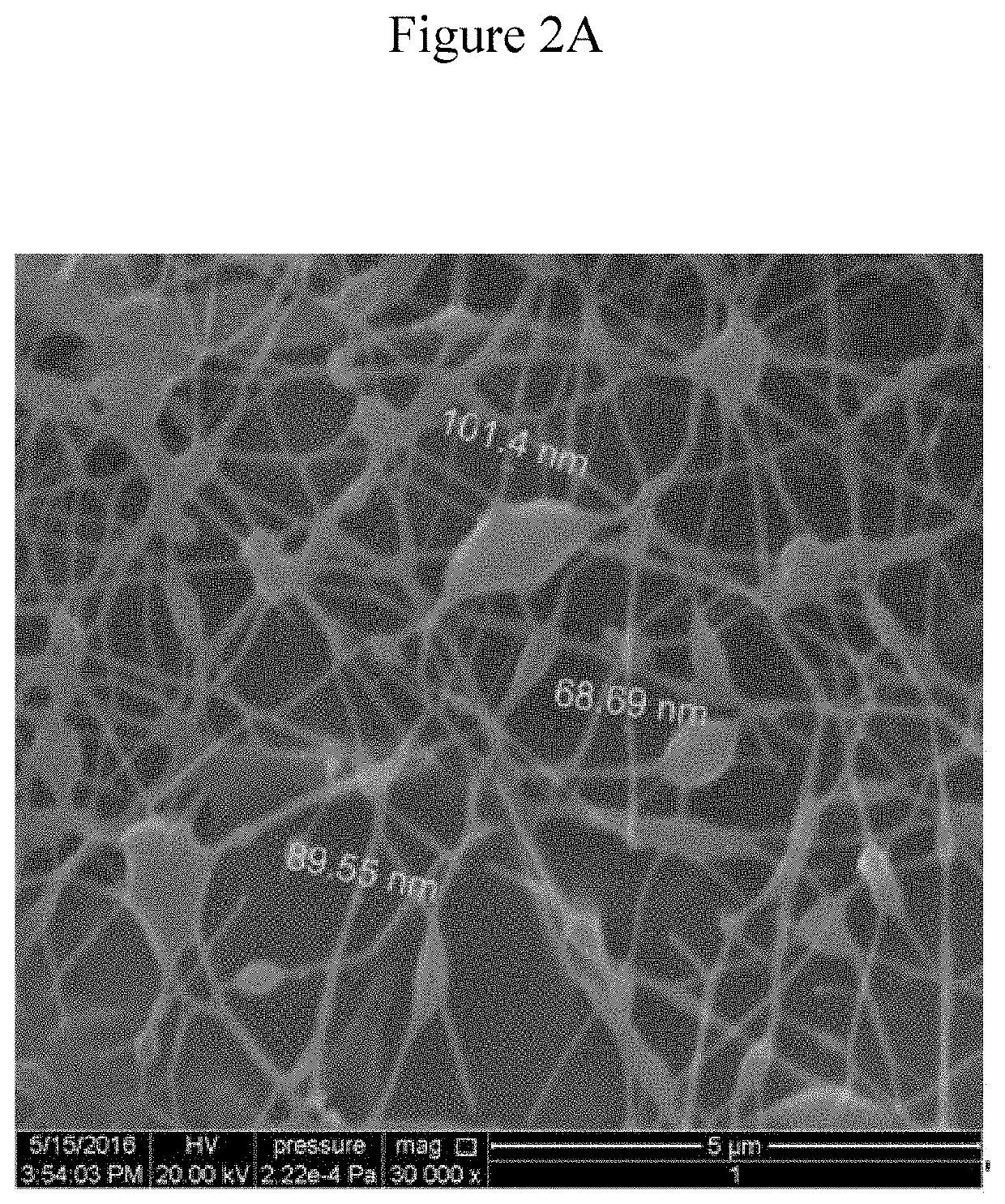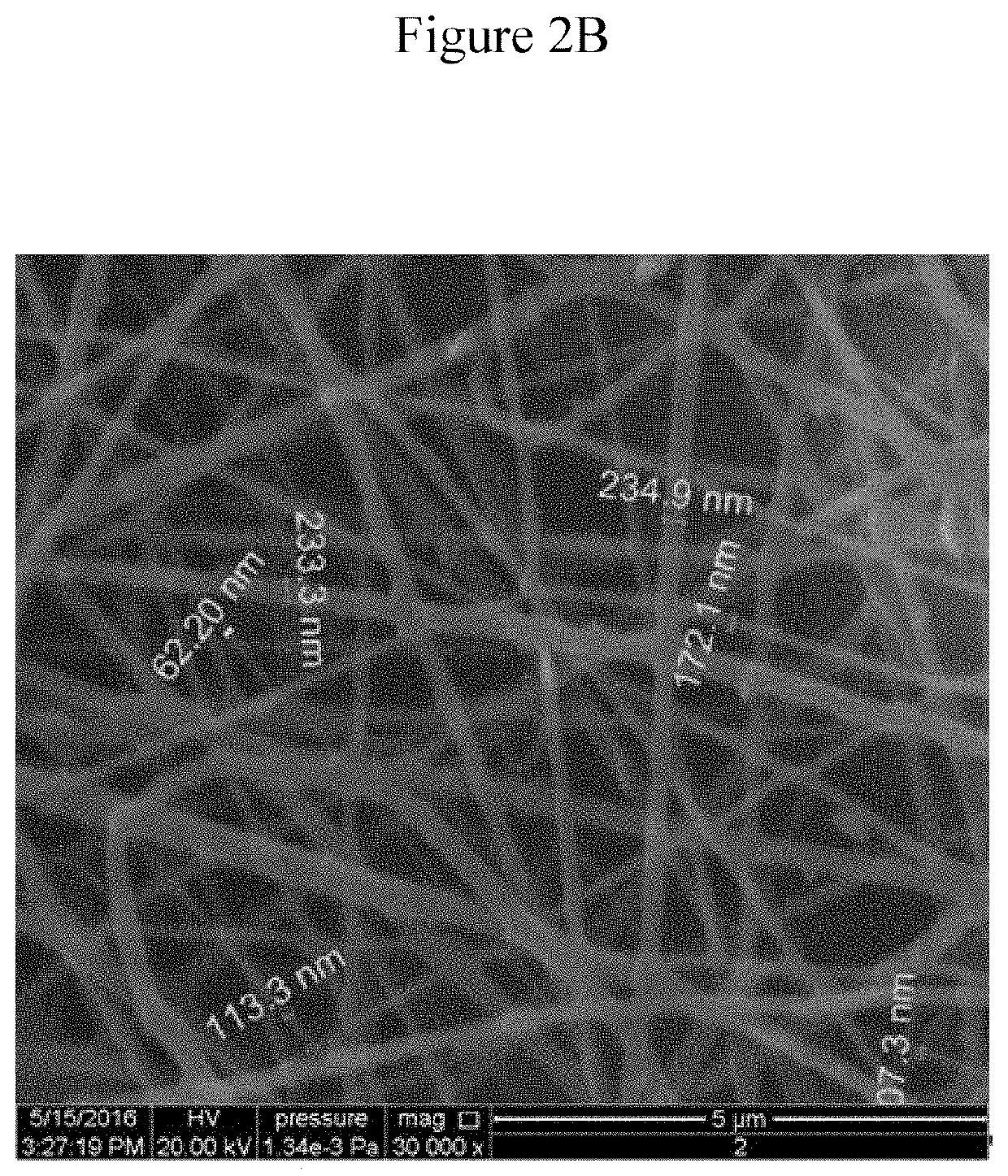Prosthetic implantable antibacterial surgical mesh
a surgical mesh and implantable technology, applied in the field of implantable surgical mesh, can solve the problems of high incidence of mesh infection, difficult treatment, and large postoperative complications of mesh infection, and achieve the effects of reducing the risk of infection, reducing the number of surgical meshes, and improving the quality of surgical meshes
- Summary
- Abstract
- Description
- Claims
- Application Information
AI Technical Summary
Benefits of technology
Problems solved by technology
Method used
Image
Examples
example 1
Materials:
[0107]Unless otherwise specified, all chemicals including 85% degree N-deacetylated chitosan, PVP (polyvinypyrrolidone), PVA (polyvinyl alcohol), glacial acetic acid, potassium dihydrogen phosphate, potassium monohydrogen phosphate, orthophosphoric acid, ciprofloxacin (CP) and other reagents were fine grades purchased from Sigma Aldrich, USA. Ciprofloxacin-HCl was supplied from Fluka Biochemical, Germany.
[0108]Staphylococcus aureus (ATCC 12228), Escherichia coli (ATCC 25922), and Pseudomonas aeruginosa (ATCC 27853) were used for evaluation of the antibacterial activity of polymer coated electrospun nanofiber mat samples.
Methods:
Polymer Solutions:
[0109]Table 1 summarizes the compositions of the polymer solutions containing ciprofloxacin-HCl to prepare the corresponding electrospinning polymer solution. A 2 wt. % solution of chitosan in 2% (v / v) aqueous acetic acid was mixed with aqueous solution of 10 wt. % of PVP and / or PVA comprising 10 wt. % of ciprofloxacin / HCl.
[0110]
TA...
example 2
Preparation of Nanofibers by Electrospinning
[0114]A custom design of an upward electrospinning apparatus diagramed in FIG. 1 was manufactured by Shenzhen Tong Li Tech, China. A set of experiments have been carried out in order to determine suitable system parameters such as the high voltage, distance between the two electrodes, and needle diameter as well as the solution parameters including percentages of the different component in the solution, viscosity, and surface tension to identify suitable solution for spinning.
[0115]Medicated and non-medicated CH solutions were prepared as described above. But, the concentration of CP was reduced to 0.25% (wt. / v) in 2% acetic acid solution (final concentration of CP in the nanofiber is approximately 3.35 wt. % in CH. The upward spinning method was used for production of the nanofibers from CH medicated or non-medicated solutions. The solutions were loaded into a glass syringe with a 28 gauge needle. The needle had outer diameter of 0.64 mm ...
example 3
Drug Release
Determination of Ciprofloxacine-HCl Calibration Curve
[0118]Column, Agilent Zorbax extend-C18 column (150 mm length×4.6 mm, i.d., 5 μm), mobile phase, 0.025 M σ-phosphoric acid adjusted to pH 3 with triethylamine:acetonitrile (75:25), UV detector set at A, =278 nm, flow rate of 1 mL / min, and injection volume of 20 μL. Approximately 20 mg of ciprofloxacin-HCl standard was weighed, transferred into a 100 mL volumetric flask, dissolved in methanol and volume was completed with phosphate buffer pH 7.4. The stock standard solution (0.2 mg / mL) were diluted to give a concentration range of 1.6 to 40 μg / mL using phosphate buffer pH 7.4 as diluting solvent.
[0119]In vitro drug release studies from 2×2 cm2 pieces of nanofiber mesh were carried out over 12 days at specified times. The mesh of each formula of Table 1 was placed in bottles with 20 mL PBS, pH 7.4. The bottles were placed in oscillating water bath at 37° C.±2. Aliquots of 1 mL were withdrawn at...
PUM
| Property | Measurement | Unit |
|---|---|---|
| diameter | aaaaa | aaaaa |
| size | aaaaa | aaaaa |
| diameter | aaaaa | aaaaa |
Abstract
Description
Claims
Application Information
 Login to View More
Login to View More - R&D
- Intellectual Property
- Life Sciences
- Materials
- Tech Scout
- Unparalleled Data Quality
- Higher Quality Content
- 60% Fewer Hallucinations
Browse by: Latest US Patents, China's latest patents, Technical Efficacy Thesaurus, Application Domain, Technology Topic, Popular Technical Reports.
© 2025 PatSnap. All rights reserved.Legal|Privacy policy|Modern Slavery Act Transparency Statement|Sitemap|About US| Contact US: help@patsnap.com



